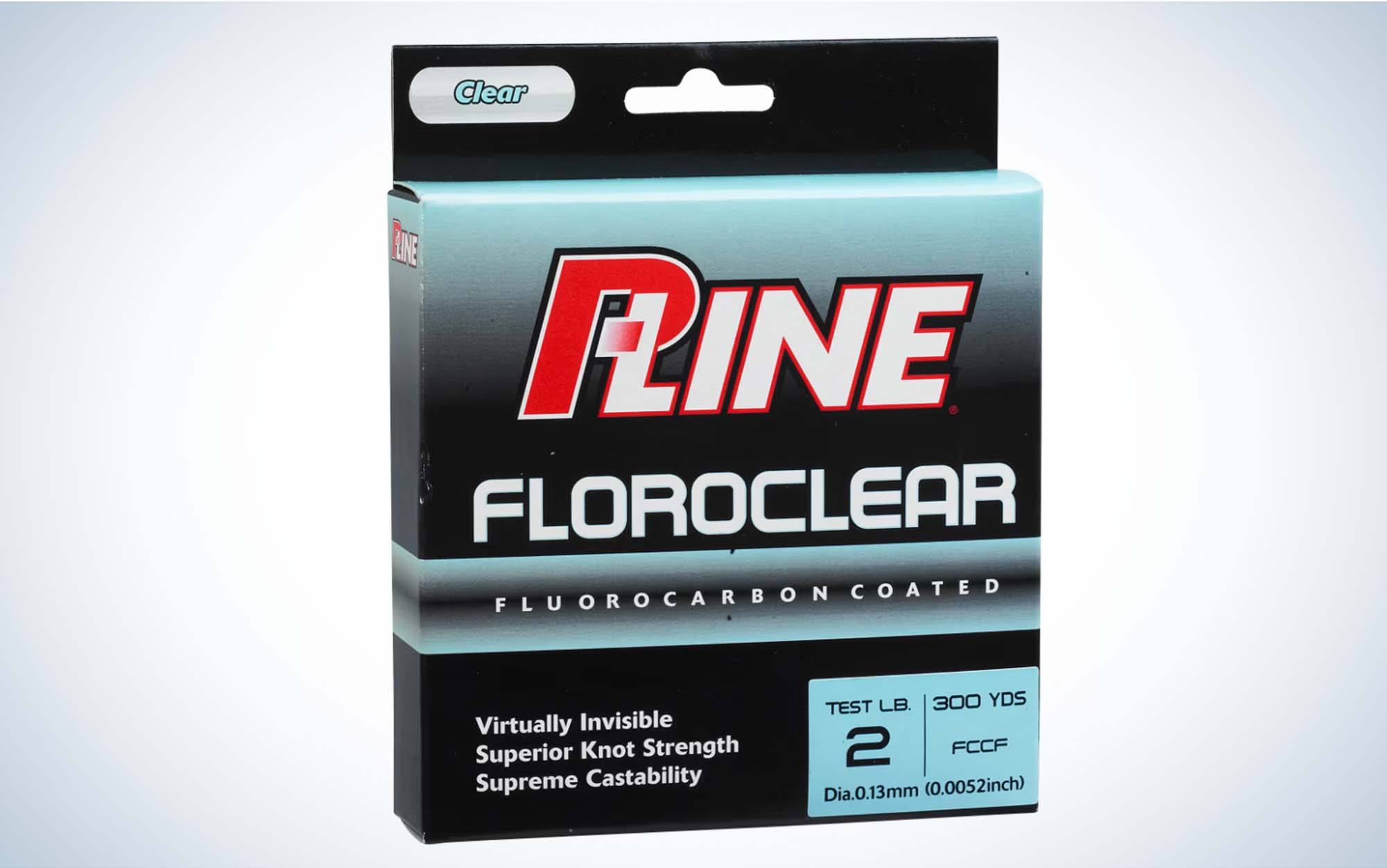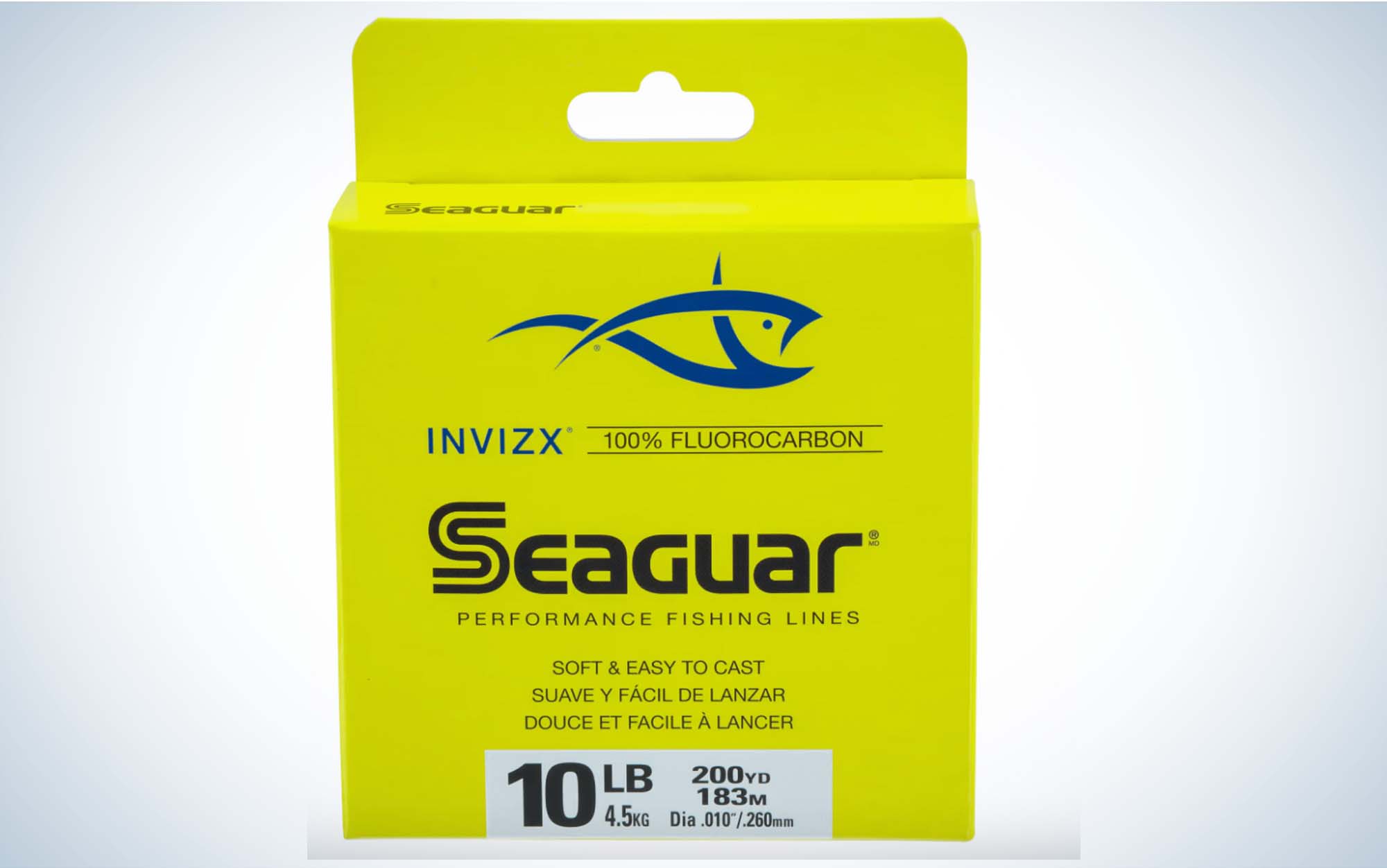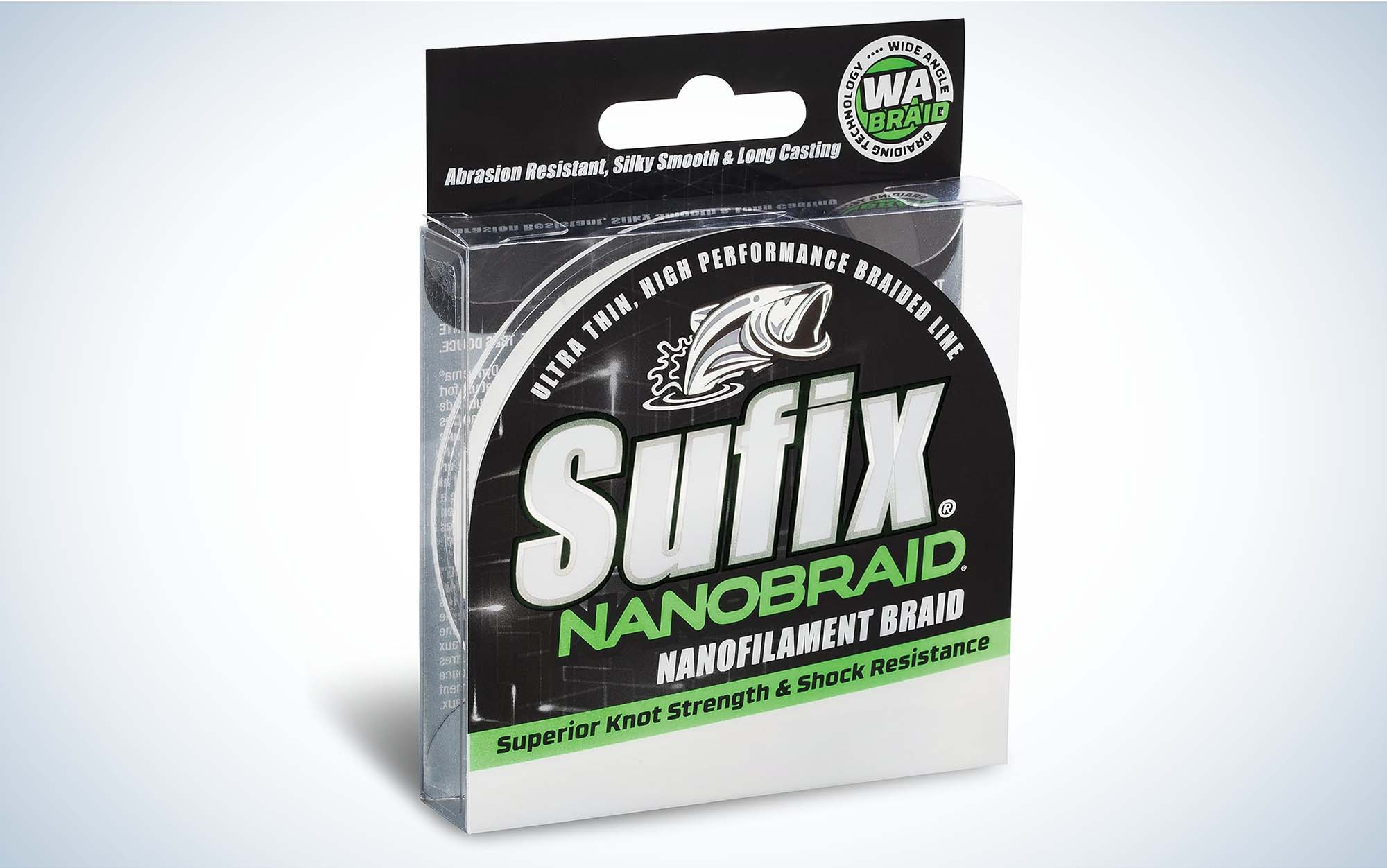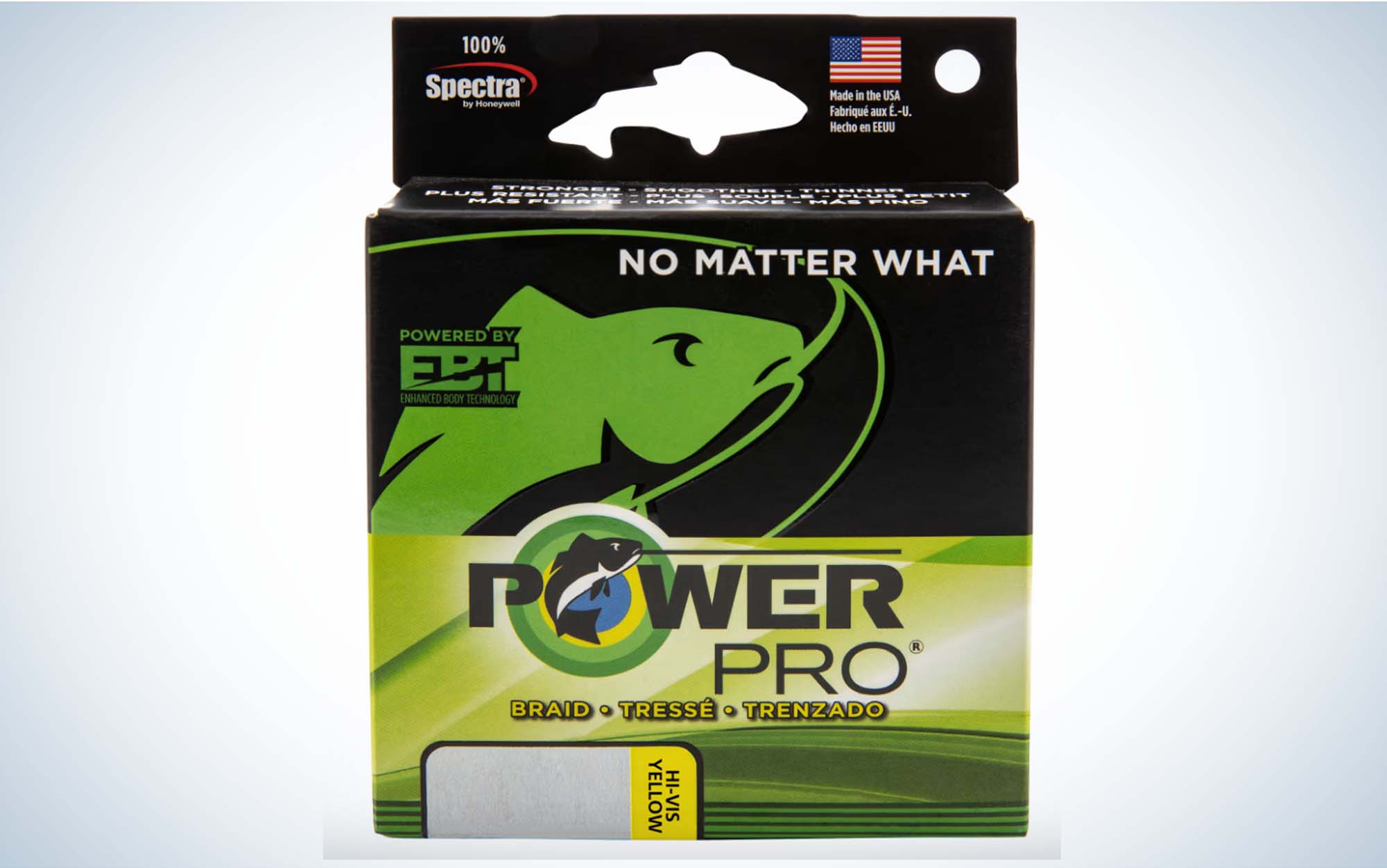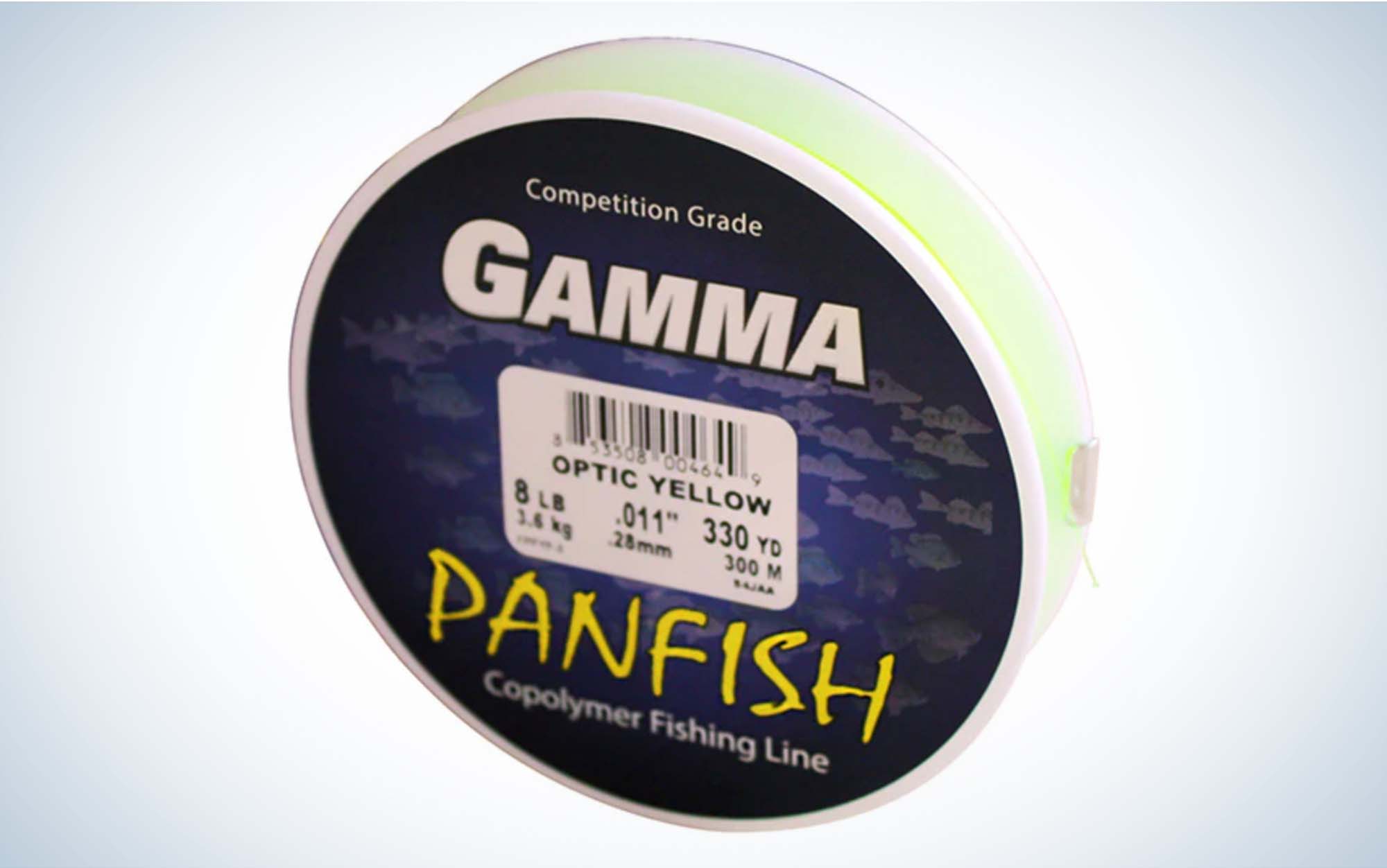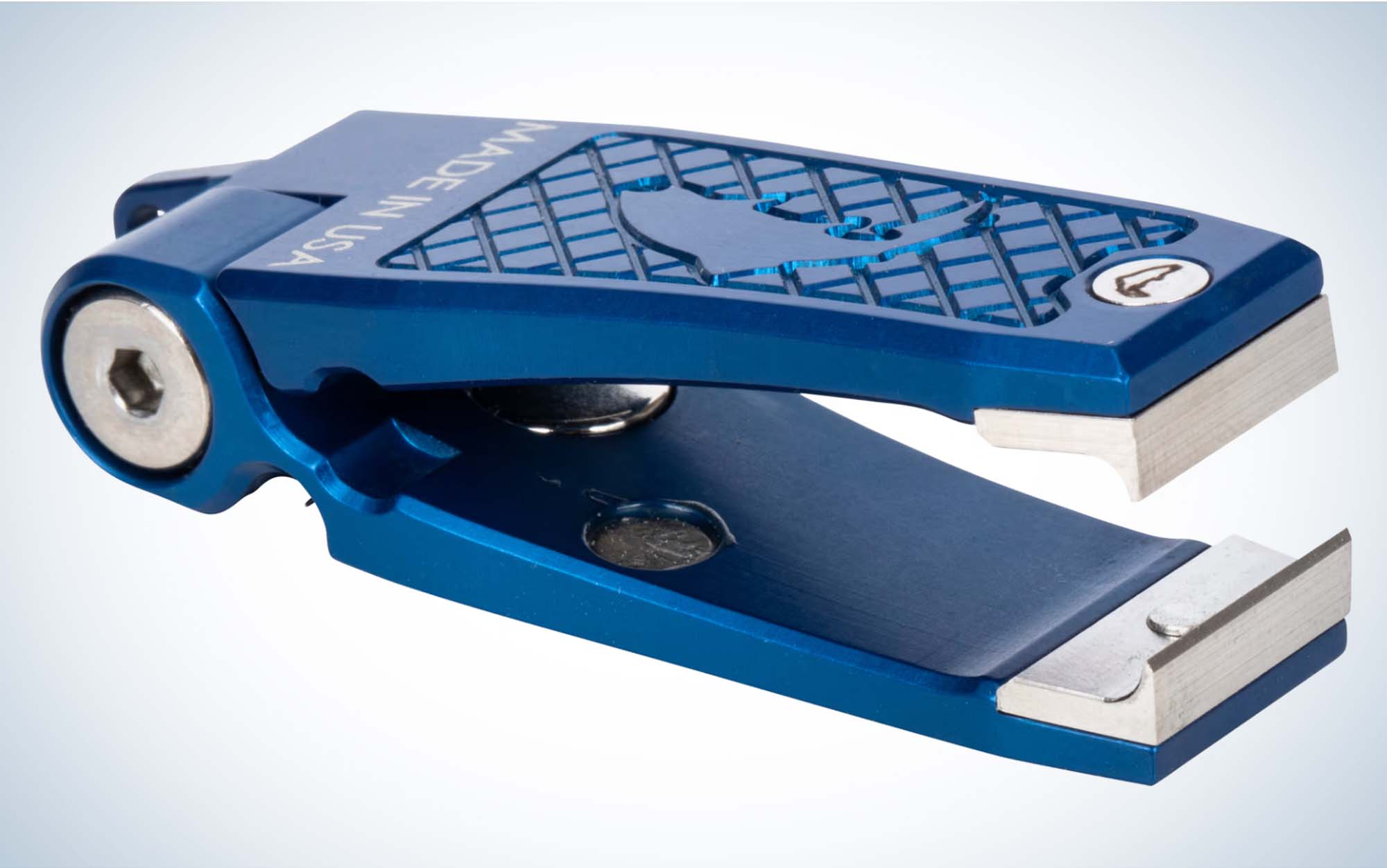We may earn revenue from the products available on this page and participate in affiliate programs. Learn More ›
To catch a crappie you have to properly present a lure, or bait, at the right depth, detect the strike, and get the fish into your hands. Your fishing line plays an important role in each one of those steps. Not to mention its role in preventing day-ending birds nests.
But do you choose monofilament, copolymer, fluorocarbon, or braid? Which of the many brands and models to go with?
I’ll help you answer those questions as I review the best fishing lines for crappie and go over how to select the right line for common techniques.
The Best Fishing Lines for Crappie: Reviews and Recommendations
Best Monofilament: Maxima Ultragreen
Key Features
- 1-, 2-, 3-, 4-, 5-, 6-, 8-, 10-, 12-pound test (up to 180-pound test) available
- Many spool size options available
Pros
- High knot and break strength
- Moss green color for ultra-low underwater visibility (Maxima also offers HV-High Visibility monofilament)
- Odd and even pound test options available for greater versatility
Cons
- Stretch of mono is not the best choice for deepwater or trolling techniques.
Applications
- Ultralight jig fishing (casting with 2- to 6- pound test)
- Slip bobber rigs

In my 30 years fishing Maxima Ultragreen the knot and break strength have been impressive. It’s the strongest, most reliable monofilament line I’ve used. It shines in scenarios where line stretch and flotation are desired, such as casting light jigs in shallow water. Moreover, for fishing in clear water, especially around vegetation, Maxima Ultragreen’s moss-like tint is one of the least visible lines I’ve seen, fluorocarbon included. If you prefer a high-vis monofilament for line watching, consider Maxima’s HV, offered in 6- to 40-pound test.
I’ve fished 2- to 6-pound test Ultragreen for over three decades and have rarely experienced issues with excess tangling or premature breakage. Fishing with 2- and 3-pound test Ultragreen, I’ve caught crappies up to 18 inches, bass over 5 pounds, and numerous 20-inch plus brown trout without incident.
Read Next: Best Crappie Lures
Best Copolymer: P-Line Floroclear
Key Features
- 2-, 3-, 4-, 5-, 6-, 8-, 10-, 12-, 15- and 20-pound test available
- Fluorocarbon coated for abrasion resistance and low underwater visibility
Pros
- 30-percent thinner diameter than comparable lines
- Odd numbered (3- and 5-pound test sizes) ideal for matching stealthy presentations with greater line strength
- Excellent crappie ice fishing line
- Inner nylon core softens the line for mono-like performance on spinning reels
Cons
- Not offered in high-vis colors
Applications
- Casting microjigs
- Livebait rigs
- Excels on small spinning reels or as a leader material with braided mainline
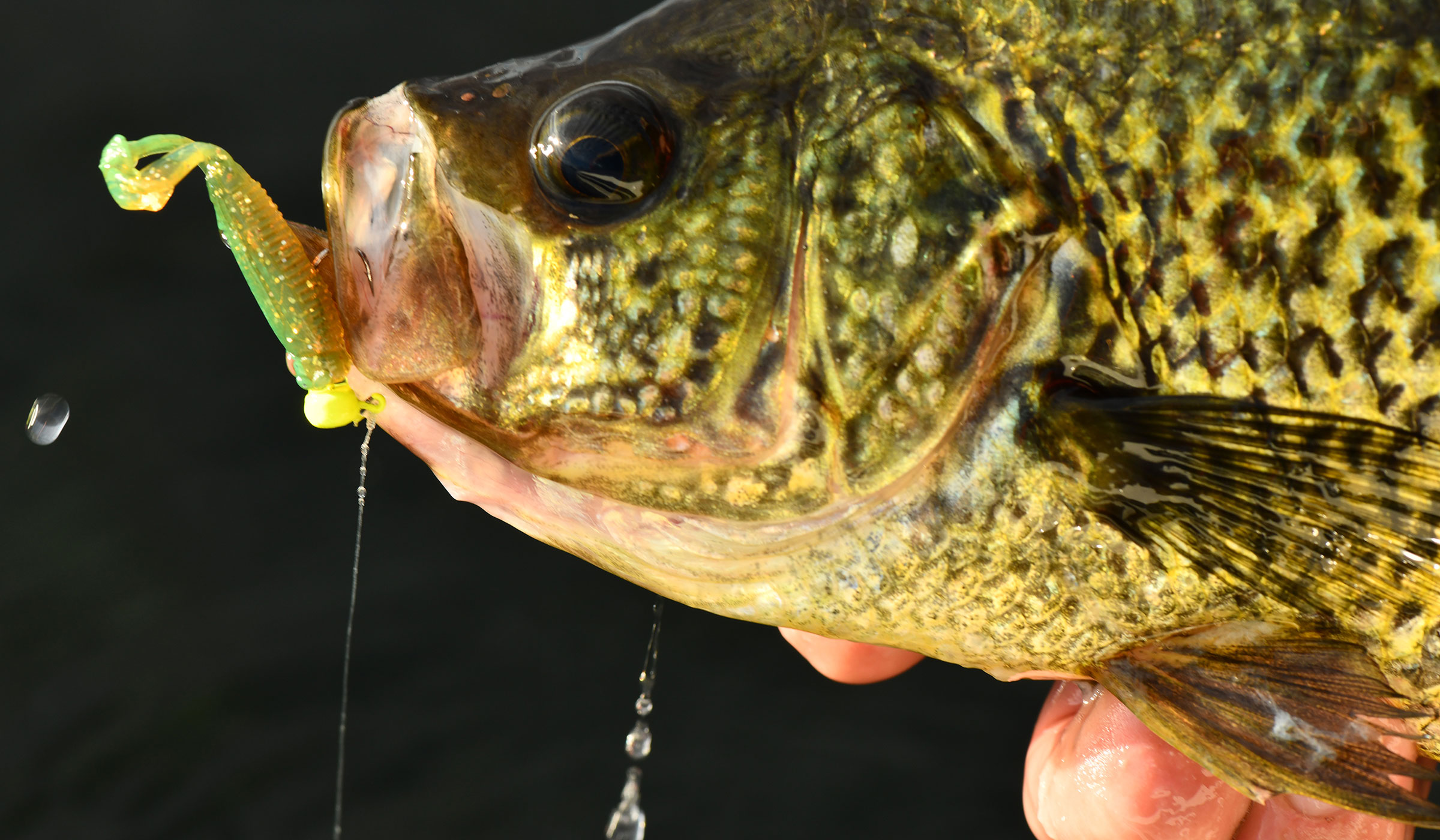
Having fished several light and ultralight combos with 3- and 5-pound test Floroclear for over a decade, I’d agree with P-Line’s claims of excellent castability and high knot strength. The line’s low memory is a Godsend for light line / microbait anglers who prefer to cast 1/32-ounce or lighter jigs with sub-4-pound test. Like other fluorocarbon-based lines, Floroclear sinks, also making it great choice when you want to reach greater depths fast, especially for live sonar techniques for deeper crappie.
Best Fluorocarbon: Seaguar InvizX
Key Features
- 4-, 6-, 8-, 10-, 12-pound test available
- 100 percent Fluorocarbon
Pros
- Relatively low memory for a 100-percent fluorocarbon line
- High abrasion resistance
Cons
- Relatively expensive ($20+ for a 200-yard spool)
- Like other pure fluorocarbon lines, its relative stiffness can cause problems with small arbor spinning reels.
- Stiffness makes it a poor choice for smaller (500 size) spinning reels
- Sinking properties aren’t ideal for slip-bobber techniques
Applications
- Fishing around brush, vegetation and docks (dock shooting)
- Ultra clear water situations
- Spooling on baitcast reels – strolling, live sonar techniques, ‘dipping’ around heavy cover
- Excellent leader material with braided mainline
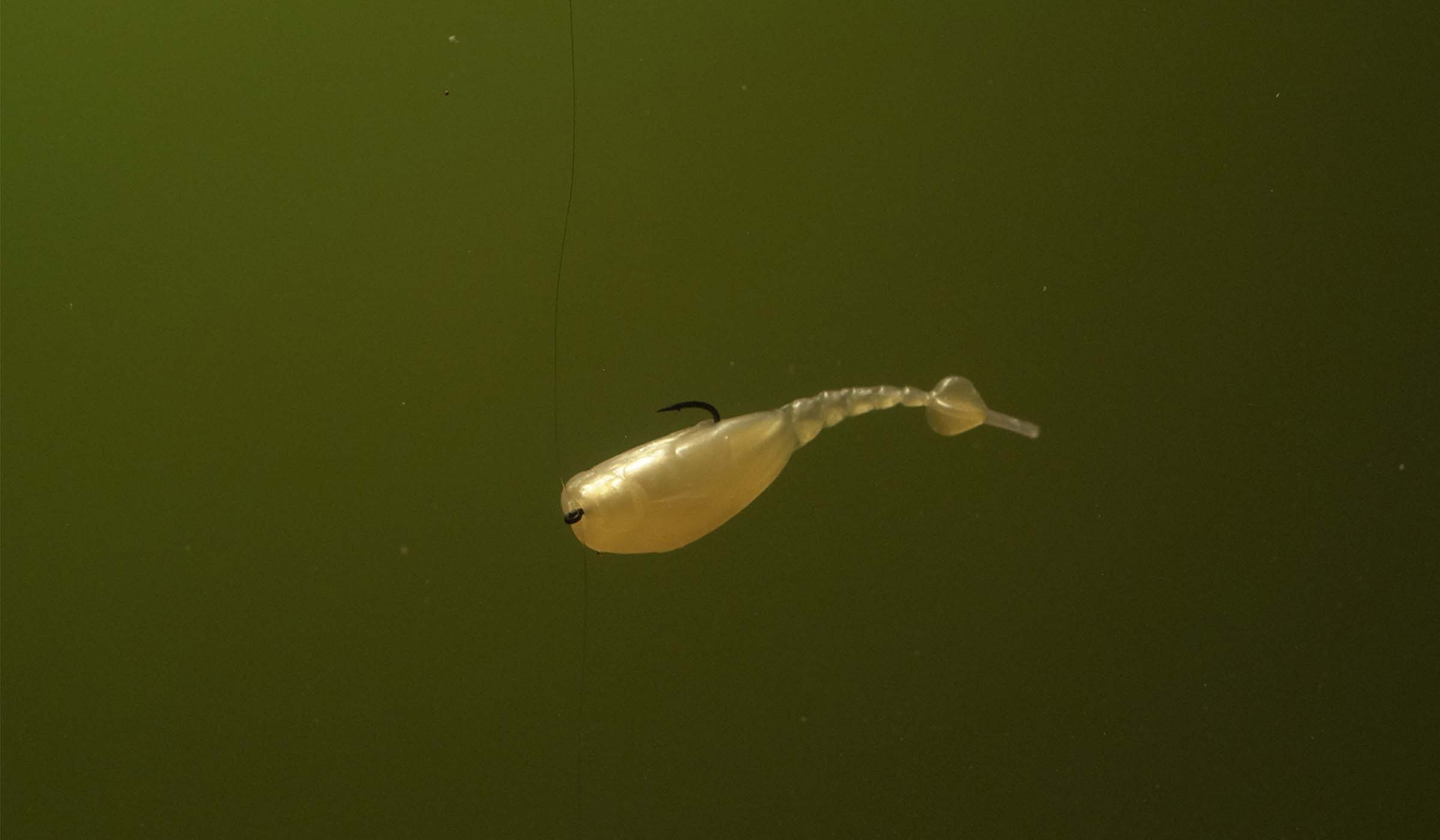
Beyond somewhat dubious claims of invisibility, the primary reasons for using a premium fluorocarbon like InvizX are its low stretch, low memory, small diameter, and sinking properties. This is one of the most manageable 100-percent fluorocarbon lines I’ve ever used. The line’s relatively low stretch aids in bite detection.
Touted as a fluorocarbon “mainline,” InvizX still fishes with a bit more stiffness than comparable mono or copolymer lines, making it a better choice for spooling on casting reels or large spinning reels (don’t spool on 500 size reels.)
Best Superline: Sufix NanoBraid
Key Features
- 2-, 3-, 4-, 6-, 8-, 10-, 12- and 14-pound test (150-yard spools)
- Aqua-Camo and Low-Vis Green
Pros
- Very small diameter (6-pound test = 0.004”) for microlight lures and low water resistance
- Very smooth and strong relative to other microbraided lines
Cons
- Low diameter can create line coils or tangles on spinning reels (be sure to spool on top of heavier mono line for best performance)
Applications
- Deep jigging
- Long casts
Admittedly, my first impressions of microbraided lines were far from positive. The lines’ thin, slick properties caused issues with knot slippage. New or variations of proven knots were required. I learned to tie a double Palomar knot. Or, after tying an improved clinch or Trilene knot, I found that adding one or two overhand knots after the initial knot did the trick — preventing slippage and impending disaster.
After encountering problems with easy breakage and excessive tangling, I discovered Sufix NanoBraid. While no microbraid is immune to wind knots, NanoBraid is the smoothest, strongest, and most reliable. For vertical jigging suspended, deepwater crappies (away from heavy cover), NanoBraid excels, offering superior bite detection while allowing lures to sink quickly to depth. For casting tiny jigs on 1000-size spinning reels, 3-pound test NanoBraid (which is crazy thin) delivers smooth, long casts, connecting you intimately with your lure. Add a 3- to 10-foot leader of 4-pound test fluorocarbon for less visibility and abrasion resistance. While traditional braid can provide a measure of protection against nicks and scrapes, microbraids can be sliced like butter, particularly when fishing around docks, wood, and vegetation. But, if you’re a fan of casting tiny lures farther and detecting every bump and bite, NanoBraid offers advantages.
Read Next: Best Crappie Rods
Best Braid: PowerPro
Key Features
- Made with Spectra Fibers by Honeywell
- 5-, 8-, 10-, 15-pound test (and heavier break strengths up to 250-pounds)
- Small diameter: 10-pound test PowerPro = 2-pound test monofilament
- Moss Green, White, Vermillion Red, and Hi-Vis Yellow colors available
Pros
- One of the highest strength-to-diameter ratios available
- Smooth surface texture for manageability and easy line-tying and casting
- Minimal stretch and sensitivity (bite detection)
Cons
- Low stretch can create slack line and lost fish
- Smaller diameter 5- to 10-pound test can break easily around heavy/sharp cover
- Strong hooksets can rip crappie jaws and result in lost fish
Applications
- Trolling with baitcasting tackle
- Deepwater techniques
- Shines with softer action rods
PowerPro’s exceptional strength shines when fishing near snaggy cover, such as wood, rock, or tough vegetation such as bulrush or lily pads. Abrasion resistance, however, is only as impactful as the line’s diameter. So, a thinner 4- to 8-pound test braid may break easily if subjected to sharp rock or jagged wood. But for preventing lost jigs, braid earns its keep; simply pull straight back on the line until the lightwire hook bend opens, allowing you to free the jig.
Braid also offers the best sensitivity, which makes it perfect for detecting up feeding crappie in deep water.
Best All-Around: Gamma Panfish High-Performance Copolymer
Key Features
- 2-, 4-, 6-, 8-, 10- and 12-pound test available (300-yard spools)
- High visibility “Optic Yellow” color for line watching / bite detection
Pros
- Supple and low memory
- High breaking strength, up to twice as strong as stated line pound test
Cons
- Not offered in odd numbered sizes, such as 3- or 5-pound test
- No clear or other line color options available
Applications
- Casting jig/plastic combos
- Slip bobber rigs
- Livebait
- Versatile as a general crappie line, especially for spinning tackle

Copolymer lines like Gamma Polyflex Panfish excel at a variety of techniques and are a major upgrade from mono: they have more strength, better abrasion resistance, and reduced line memory (fewer coils/tangles). That makes them exceedingly versatile. They’re also a happy medium between stretchy mono and nearly stretchless fluorocarbon. That means improved bite detection over mono, which is further aided by the line’s highly-visible, yellow color.
I found Gamma Panfish to be supple and castable. It spools nicely on 1000-size spinning reels and peels off the arbor in nice coil-free ribbons. For anglers looking for an all-around crappie line matching a variety of techniques, Gamma Panfish excels.
Best Line Cutting Tool: Simms Fishing Pro Nipper
Key Features
- Durable anodized aluminum handles with stainless steel jaws
- Magnetic spring with rare earth magnets never wears out
- Ergonomic design for one-handed operation
- Magnetic hook/jig line threader, split-shot crusher, hook eye needle and lanyard attach point
Pros
- Cleanly cuts all lines, including those with small diameter
- Riveted jaws are replaceable through Simms Repair Center
- Magnet assures small hooks aren’t lost or dropped
- Cuts very thin lines smoothly
Cons
- Expensive at $99 per pair
- Not ideal for cutting the thinnest microbraided lines
While the Pro Nipper is built for small hooks and fly fishing, it’s an invaluable little crappie fishing line clipper with some cool tricks up its sleeve. Super sharp stainless-steel jaws are replaceable via Simms Fishing. The tool offers several other features, such as a split-shot crusher, jig hook eye needle (for clearing glue or paint), and a novel reverse magnetized hinge that never wears out.
Particularly if you use tiny jigs and hooks, Simms’ Pro Nipper is an incredibly useful tool.
Best Line Removal Tool: Rapala Compact Line Remover
Key Features
- 5-inches
- Fits in most tackle boxes
- Operates on two AA batteries (not included)
- High torque motor removes 6-feet of lie per second
Pros
- Compact and easy to use for quick line removal
Cons
- Does not always work great with very light lines, such as 2-pound test
A must have for any angler who frequently respools fishing line, the Rapala Compact Line Remover is always attached to one of several fishing tool lanyards in my boat. Smaller and lighter than similar products, the Rapala version offers fast, reliable line removal.
Best Line Spooler: KastKing Kalibrate Line Counter Line Spooler
Key Features
- Compatible with casting and spinning reels
- Handles 200-yard filler spools up to large 1/4-pound line spools
- 3-position clamping system fits most rods
- Integrated line counter for precise spool filling
Pros
- Anti line twist operation is calibrated for trouble free loading of spinning and casting reels
- Allows for single person operation
- Includes 5-inch Braid Scissors
Cons
- Tends to over-spool baitcasters with excessive line on the left side of spool
While many line spooling gadgets require permanent mounting to a wall or table, the KastKing Kalibrate Line Spooler attaches to your fishing rod, allowing for easy spooling without a second person—perfect for in-boat or on-the-go line loading. What I particularly like about this tool is the way it spools spinning and casting reels differently, so twist isn’t introduced during the winding process. Also valuable is the built-in line counter, which saves money by helping to maximize each filler spool without under or overloading your reels.
Read Next: How to Spool a Spinning Reel
How to Choose the Best Fishing Line for Crappie
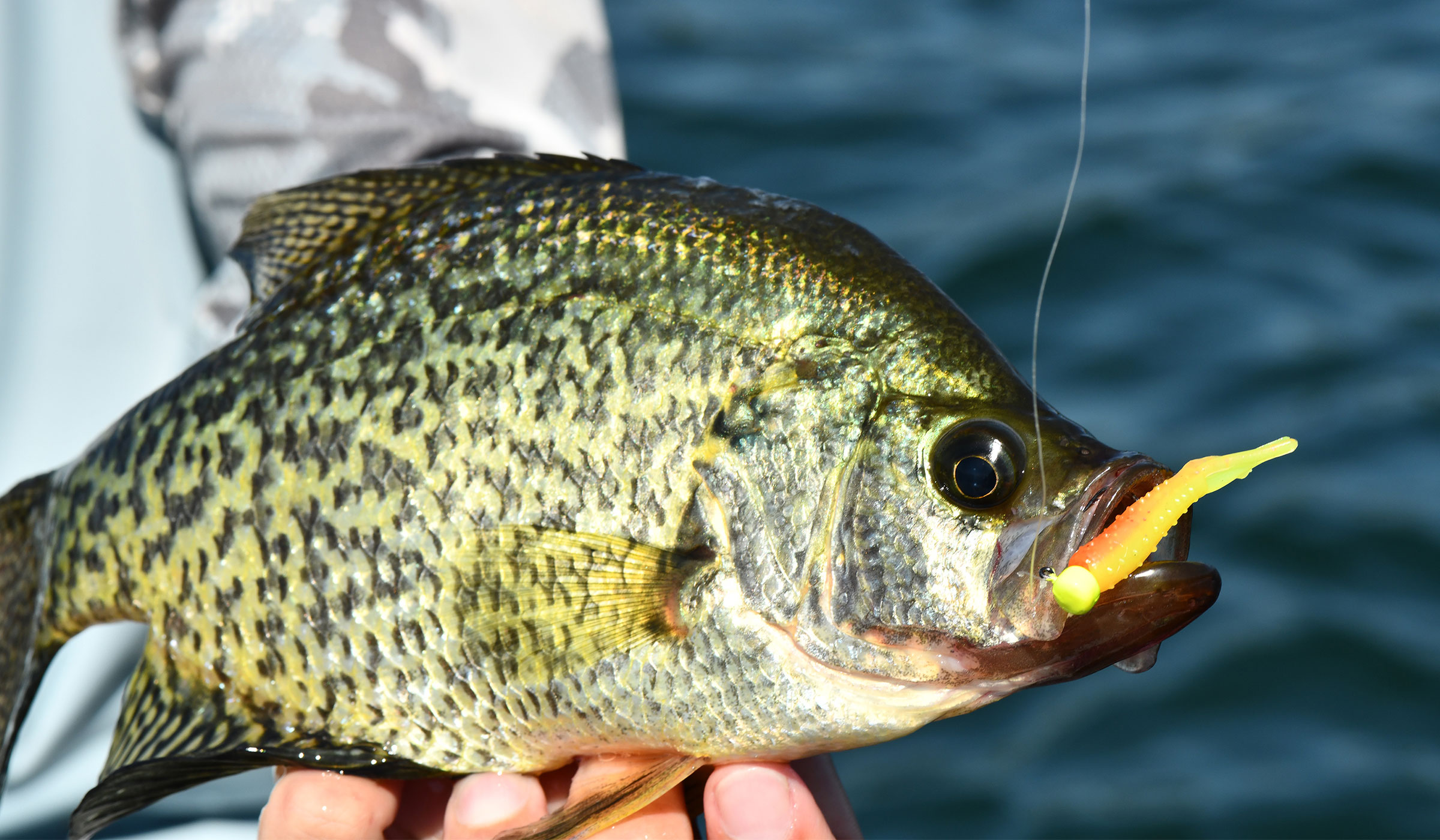
Not so many years ago, I discovered that despite bearing different brands, many fishing lines were being built by one or two companies. Today, while most fluorocarbon lines are still made by one manufacturer, braided lines have branched out in disparate directions. Braided lines built with Spectra (developed by Honeywell) offer remarkable strength-to-diameter ratios, pound-for-pound ten times stronger than steel and the same material used in soft armor bulletproof vests and helmets. For light line crappie applications Spectra is ideal, although lines made with Dyneema offer slighter higher breaking strengths in larger diameters.
Here’s a full break down on how to choose the right type of fishing line for crappie.
Monofilament
Near neutrally buoyant, monofilament is an excellent all-purpose crappie fishing line. These traditional translucent lines — made from a single strand of material — offer smooth, easy-handling properties that yield long casts, easy knot tying and just enough stretch to act as a shock absorber. This flexibility prevents small hooks from tearing delicate crappie jaws. Mono’s stretch also inhibits the formation of slack line, which can lead to a reduction in sensitivity, but also means fewer lost fish. These lines also offer forgiveness when your drag sticks, stretching up to 25-percent and preventing broken line and lost lures.
For casting jigs in shallow water or working slip bobber set ups, monofilament still excels. Its near-neutral buoyancy provides a slower sink rate, excess line laying mostly flat on the surface. Finally, in underwater tests, clear, brown and dark green monofilament lines can all be quite invisible (at least to human eyes), occasionally equaling that of fluorocarbon.
Copolymer
Created by uniting two different polymers, such as a nylon core and fluorocarbon shell, copolymer lines can offer more abrasion resistance and strength without sacrificing manageability. Typically, copolymer lines offer less stretch than mono but more than braid, providing an ideal compromise between the two, particularly in the realm of sensitivity. Some manufacturers also claim their copolymer lines are thinner (and stronger) than monofilament. Copolymers integrated with fluorocarbon sink faster than straight monofilament, too.
Having fished with over a dozen copolymer fishing lines for crappie and other panfish, I believe the best of these lines offer improved abrasion resistance, less stretch and potentially fewer problematic line coils vs traditional monofilament.
Fluorocarbon
The first fluorocarbon lines were used exclusively as leader material, as they were simply too stiff to spool on most spinning reels and weren’t knot friendly. Most top manufacturers today offer refined fluoro lines with softer compositions, allowing for mainline spooling and casting. Knots still need to be moistened liberally to prevent line burn and failure, but otherwise, most fluoro lines spool well on casting reels, in particular. Other properties include high abrasion resistance, lower stretch (relative to mono) and lower refractive index. While manufacturers claim fluorocarbon is the least visible of all lines, it still appears quite visible when viewed from below (looking up toward the surface) or near solid cover objects. Fluorocarbon is largely invisible in clear, open water environments.
The two biggest fishing advantages are abrasion resistance and relative low stretch — ideal for deeper water jigging applications. Fluoro also remains a terrific leader material when used with braided line, as it offers less visibility and more abrasion resistance (relative to line diameter).
Braid / Fused “Superline”
For pulling crankbaits and other trolling or longline / deepwater tactics, these small diameter lines — made from Spectra, Dyneema, Kevlar, etc. — offer otherworldly break-strength. (If you’ve ever cut your fingers pulling on a superline, you get it.) Opaque in nature, most of these lines are highly visible underwater, which may or may not be a factor, depending on water clarity and fishing pressure.
Micro “Superlines”
Perhaps offering more potential for light line, light lure enthusiasts than other category, microlines such as Berkley NanoFil and Sufix NanoBraid provide exceptional diameter to strength quotients. Like traditional braid, these microlines offer minimal stretch and floating properties. While early versions of these lines were problematic in terms of line coils and tangles, especially on small arbor spinning reels, newer microlines perform quite well.
Having cast numerous spinning reels with these lines, I’d suggest spooling onto larger arbor 1000- and larger size reel spools and starting with a heavier mono backing, such as 20 yards of 10-pound test, which prevents many line twist issues. Also, if you’re encountering headaches with knot slippage, consider adding one or two half-hitches once you’ve finished tying your primary knot. Cinch as tight as possible to check the knot before fishing.
Spooled with 3-pound test NanoBraid and wielding a high-grade rod, such as a 6-foot 9-inch St Croix Legend Elite Panfish, it’s possible to sling 1/32- and even 1/64-ounce jigs further than you thought possible. These lines also shine for live sonar fishing in deeper water or for suspended crappies — low stretch equals superior bite detection and hookset success, even at greater distances.
Read Next: How to Catch Crappie
Final Thoughts on the Best Fishing Lines for Crappie
If you want to catch more crappie this year, you might be trying new lures, techniques, or rods. Just make sure you have the best fishing line for crappie to go with them and you’ll maximize your success.

